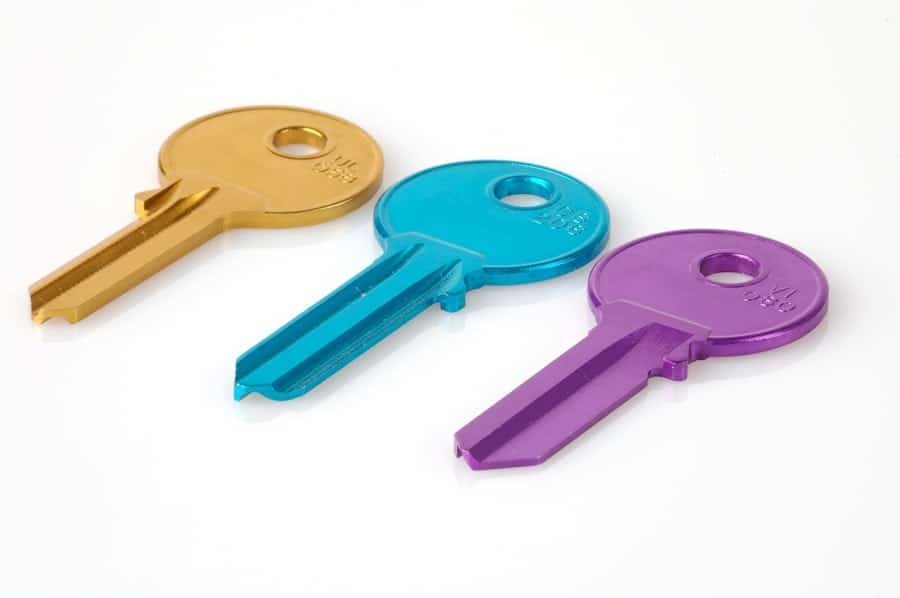Quantum cryptography represents a revolutionary approach to secure communication, leveraging the principles of quantum mechanics to protect information in ways that classical cryptographic methods cannot. As the digital landscape evolves, the need for robust security measures has become paramount, particularly in an era marked by increasing cyber threats and data breaches. Traditional cryptographic techniques, which rely on mathematical algorithms, are becoming increasingly vulnerable to sophisticated attacks, especially with the advent of quantum computing.
In this context, quantum cryptography emerges as a beacon of hope, promising a level of security that is theoretically unbreakable. At its core, quantum cryptography utilises the peculiar properties of quantum bits, or qubits, which can exist in multiple states simultaneously due to superposition. This characteristic allows for the creation of secure communication channels that are fundamentally different from those established by classical means.
The most notable application of quantum cryptography is Quantum Key Distribution (QKD), which enables two parties to generate a shared, secret key that can be used for encrypting messages. The security of this key is guaranteed by the laws of quantum physics, making it impervious to eavesdropping and other forms of interception.
Summary
- Quantum cryptography uses the principles of quantum mechanics to secure communication and data transmission.
- Quantum cryptography works by using quantum key distribution to create secure encryption keys.
- Advantages of quantum cryptography include its resistance to hacking and its ability to detect eavesdropping.
- Challenges and limitations of quantum cryptography include the need for expensive equipment and the limited range of quantum communication.
- Quantum cryptography offers a more secure and future-proof alternative to traditional cryptography methods.
How Quantum Cryptography Works
The operational foundation of quantum cryptography lies in the principles of quantum mechanics, particularly the phenomena of superposition and entanglement. In a typical QKD protocol, such as the well-known BB84 protocol developed by Charles Bennett and Gilles Brassard in 1984, two parties—commonly referred to as Alice and Bob—exchange qubits encoded with information about their chosen basis states. These qubits can be polarised photons, for instance, which can be manipulated to represent binary values.
The key aspect of this exchange is that any attempt by an eavesdropper, often referred to as Eve, to intercept or measure the qubits will inevitably disturb their state due to the observer effect inherent in quantum mechanics. When Alice sends qubits to Bob, they each independently choose a basis for measurement—either rectilinear or diagonal. After the transmission, they publicly share their chosen bases but not the results of their measurements.
By comparing their bases, they can identify which qubits were measured using the same basis and thus can be used to form a shared key. The security of this process is guaranteed by the fact that any interception attempt by Eve will introduce detectable anomalies in the key generation process. If Eve tries to measure the qubits, she will alter their states, leading to discrepancies that Alice and Bob can detect through a process known as error rate analysis.
Advantages of Quantum Cryptography

One of the most significant advantages of quantum cryptography is its inherent security model, which is fundamentally different from traditional cryptographic systems. The security of quantum cryptography does not rely on computational complexity but rather on the laws of physics. This means that even with unlimited computational power, an adversary cannot decipher the key without being detected.
This property makes quantum cryptography particularly appealing in scenarios where sensitive information must be transmitted securely, such as in governmental communications or financial transactions. Moreover, quantum cryptography offers the potential for future-proofing against advancements in technology. As quantum computers become more powerful and capable of breaking traditional encryption algorithms like RSA and ECC (Elliptic Curve Cryptography), quantum cryptography remains resilient.
The ability to detect eavesdropping attempts in real-time adds an additional layer of security that is not present in classical systems. Furthermore, as more organisations recognise the importance of safeguarding their data against emerging threats, the adoption of quantum cryptographic solutions is likely to increase.
Challenges and Limitations of Quantum Cryptography
Despite its promising advantages, quantum cryptography is not without its challenges and limitations. One significant hurdle is the requirement for specialised hardware and infrastructure to implement QKD systems effectively. The transmission of qubits typically necessitates advanced optical technologies and fibre optic networks capable of maintaining the integrity of quantum states over long distances.
This requirement can lead to high implementation costs and logistical complexities that may deter widespread adoption. Additionally, while QKD provides a secure method for key distribution, it does not address all aspects of secure communication. For instance, once a key has been established using quantum methods, traditional encryption techniques must still be employed to encrypt the actual messages being transmitted.
This reliance on classical encryption methods means that vulnerabilities inherent in those systems could still be exploited if not adequately addressed. Furthermore, environmental factors such as noise and loss during transmission can affect the performance and reliability of quantum communication systems.
Quantum Cryptography vs Traditional Cryptography
The distinction between quantum cryptography and traditional cryptographic methods lies primarily in their underlying principles and security models. Traditional cryptography relies on mathematical algorithms that are computationally intensive; their security is based on the assumption that certain problems are difficult to solve within a reasonable timeframe. For example, RSA encryption relies on the difficulty of factoring large prime numbers, while AES (Advanced Encryption Standard) depends on complex substitution and permutation operations.
In contrast, quantum cryptography leverages the fundamental properties of quantum mechanics to ensure security. The key distribution process in QKD is designed to detect any eavesdropping attempts through changes in the quantum states being transmitted. This means that while traditional cryptographic systems may become vulnerable as computational power increases—particularly with the rise of quantum computers—quantum cryptography remains secure against such advancements due to its physical underpinnings.
Moreover, traditional cryptographic systems often require periodic key renewal to maintain security over time, whereas QKD allows for continuous key generation and distribution without compromising security. This dynamic capability makes quantum cryptography particularly advantageous for environments where data integrity and confidentiality are paramount.
Current and Future Applications of Quantum Cryptography

Currently, quantum cryptography is being explored and implemented across various sectors where secure communication is critical. Financial institutions are among the early adopters, utilising QKD to protect sensitive transactions and customer data from potential breaches. For instance, banks in countries like Switzerland have begun integrating quantum key distribution into their existing security frameworks to enhance their resilience against cyber threats.
In addition to finance, government agencies are also investing in quantum cryptographic technologies to safeguard national security communications. Countries such as China have made significant strides in developing satellite-based QKD systems capable of transmitting secure keys over vast distances. The Micius satellite, launched in 2016, has successfully demonstrated intercontinental QKD between China and Europe, showcasing the potential for global secure communication networks.
Looking towards the future, the applications of quantum cryptography are expected to expand significantly as technology matures. The integration of quantum networks into existing telecommunications infrastructure could pave the way for a new era of secure internet communications. Furthermore, advancements in quantum repeaters—devices that extend the range of QKD by overcoming distance limitations—could facilitate long-distance secure communication on a global scale.
The Role of Quantum Cryptography in Cybersecurity
As cyber threats continue to evolve in sophistication and frequency, the role of quantum cryptography in enhancing cybersecurity becomes increasingly vital. The ability to provide unbreakable encryption through QKD offers a formidable defence against potential attackers who seek to exploit vulnerabilities in traditional systems. In an age where data breaches can have catastrophic consequences for individuals and organisations alike, adopting quantum cryptographic solutions can significantly bolster overall cybersecurity strategies.
Moreover, as organisations transition towards cloud computing and decentralised data storage solutions, ensuring secure data transmission becomes paramount. Quantum cryptography can play a crucial role in securing communications between distributed systems and protecting sensitive information from interception during transmission. By integrating QKD into cloud services and IoT (Internet of Things) devices, businesses can enhance their security posture while maintaining compliance with stringent data protection regulations.
The proactive adoption of quantum cryptographic technologies also positions organisations as leaders in cybersecurity innovation. As awareness grows regarding the limitations of traditional encryption methods in the face of emerging threats, those who invest in quantum solutions will likely gain a competitive advantage in safeguarding their assets and maintaining customer trust.
The Future of Secure Communication with Quantum Cryptography
The future of secure communication appears increasingly intertwined with advancements in quantum cryptography. As traditional methods face mounting challenges from both technological advancements and evolving cyber threats, the unique properties offered by quantum mechanics present a compelling alternative for ensuring data integrity and confidentiality. While challenges remain regarding implementation costs and infrastructure requirements, ongoing research and development efforts are likely to address these issues over time.
As we move forward into an era where digital communication is ubiquitous and essential for both personal and professional interactions, embracing quantum cryptography could redefine our approach to cybersecurity. With its promise of unbreakable encryption and real-time detection of eavesdropping attempts, quantum cryptography stands poised to revolutionise how we think about secure communication in an increasingly interconnected world.
Quantum Cryptography: The Future of Secure Communication is a fascinating article that delves into the innovative technology that is revolutionizing the way we communicate securely. In a related article, 7 Immense Benefits of Internet Marketing for Businesses, the importance of leveraging digital strategies to reach a wider audience and drive business growth is explored. Both articles highlight the significance of embracing cutting-edge technologies and techniques to stay ahead in today’s fast-paced business world.
FAQs
What is quantum cryptography?
Quantum cryptography is a method of secure communication that uses quantum mechanics to provide encryption and decryption of data. It relies on the principles of quantum physics to ensure the security of transmitted information.
How does quantum cryptography work?
Quantum cryptography uses the principles of quantum mechanics, such as the uncertainty principle and quantum entanglement, to create a secure communication channel. It involves the use of quantum key distribution to generate and distribute encryption keys between communicating parties.
What are the advantages of quantum cryptography?
Quantum cryptography offers several advantages over traditional cryptographic methods, including unconditional security, the ability to detect eavesdropping, and the potential for long-term security even in the presence of advances in computing power.
What are the limitations of quantum cryptography?
One of the main limitations of quantum cryptography is the current technological challenges in implementing quantum communication systems, such as the need for reliable quantum key distribution protocols and the requirement for specialized hardware.
Is quantum cryptography the future of secure communication?
Many experts believe that quantum cryptography has the potential to revolutionize secure communication in the future, especially as quantum technologies continue to advance. However, there are still technical and practical challenges that need to be addressed before it becomes widely adopted.
